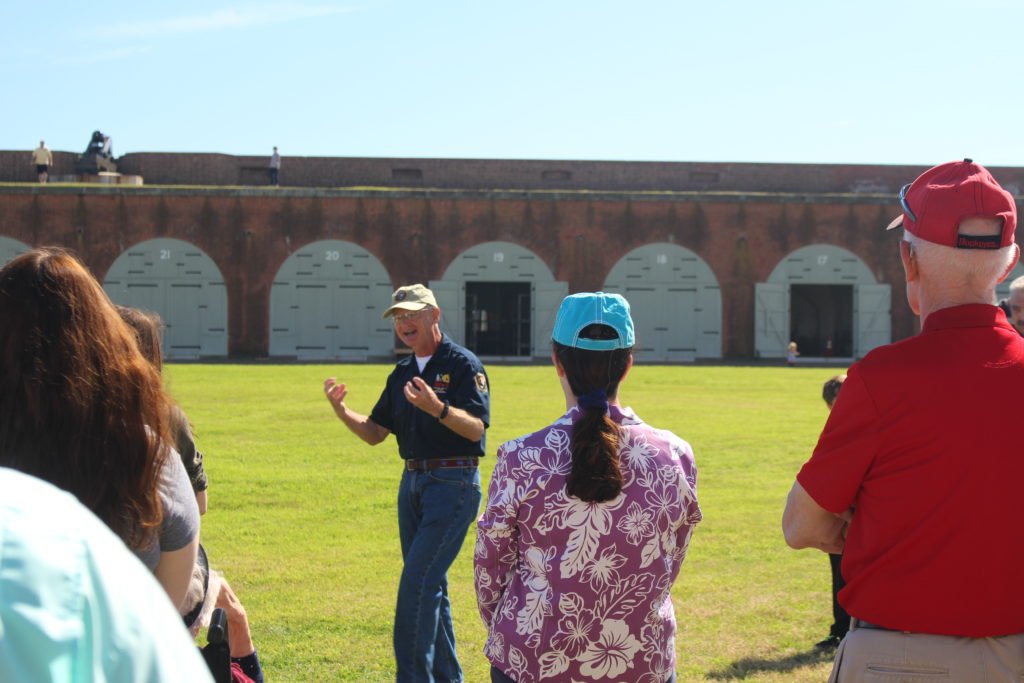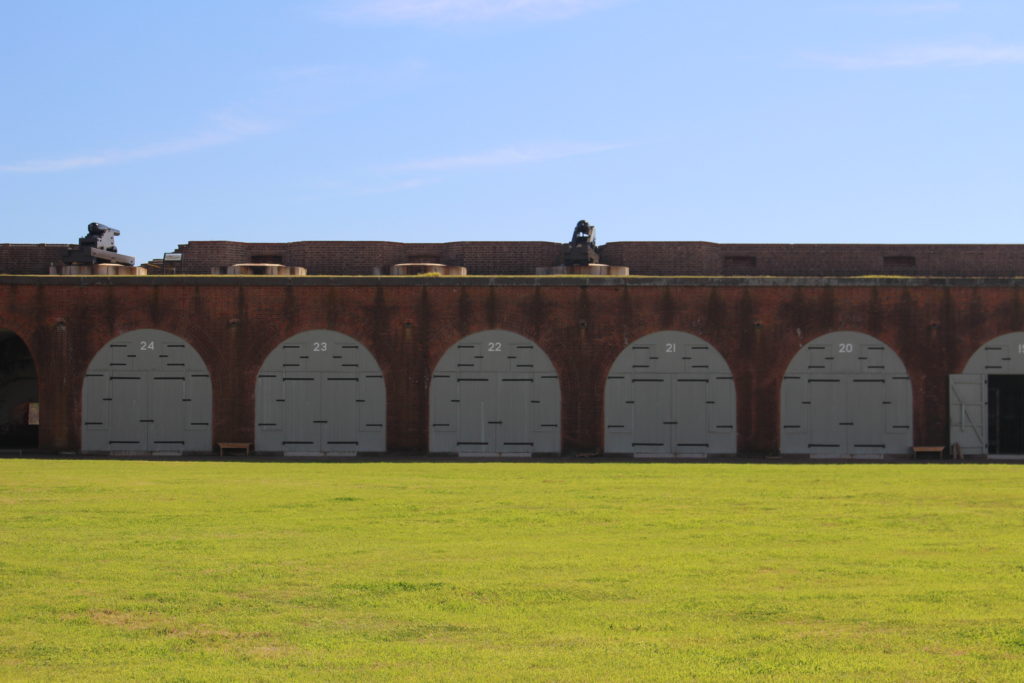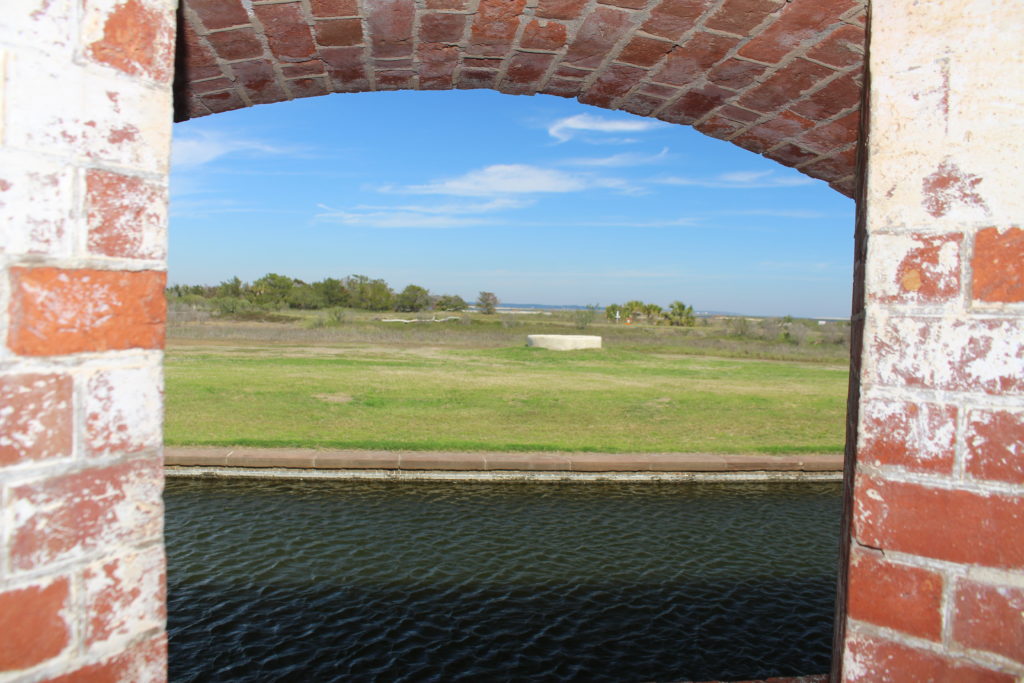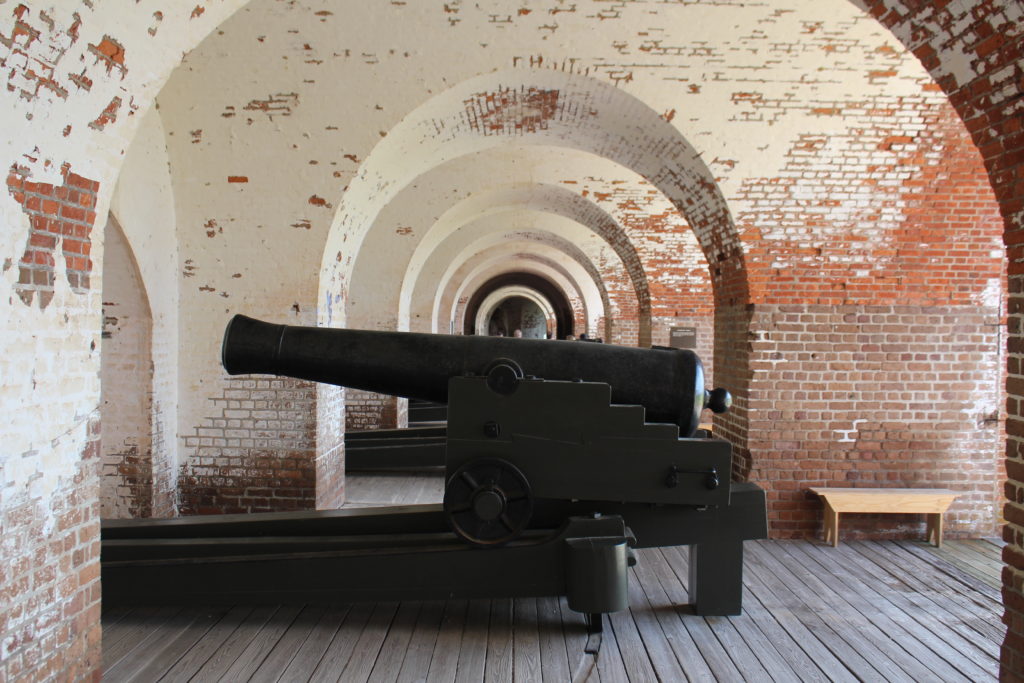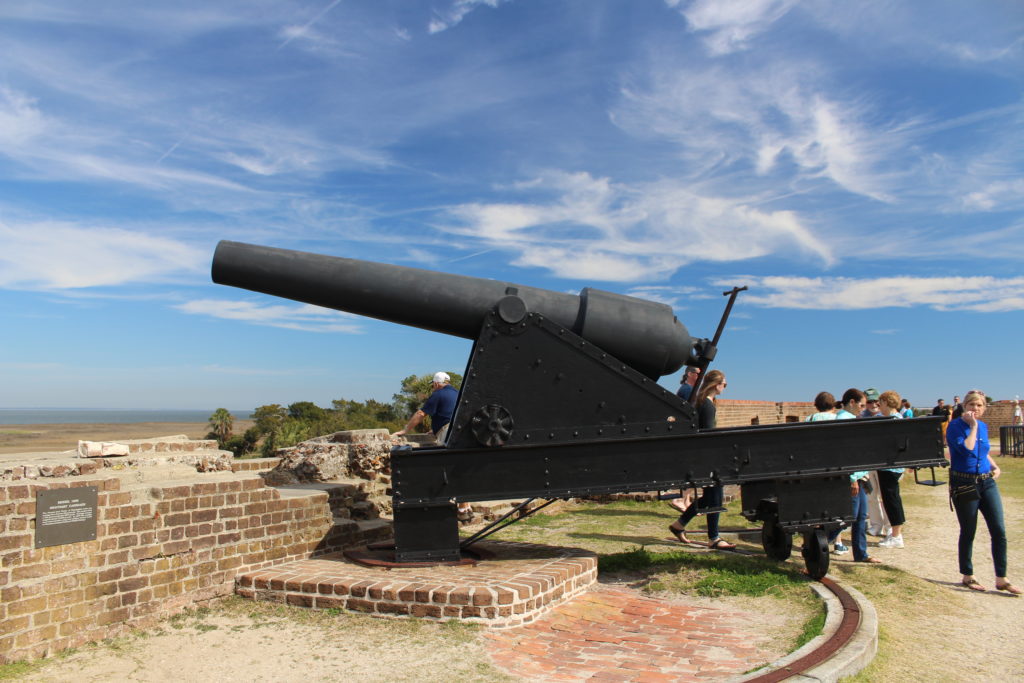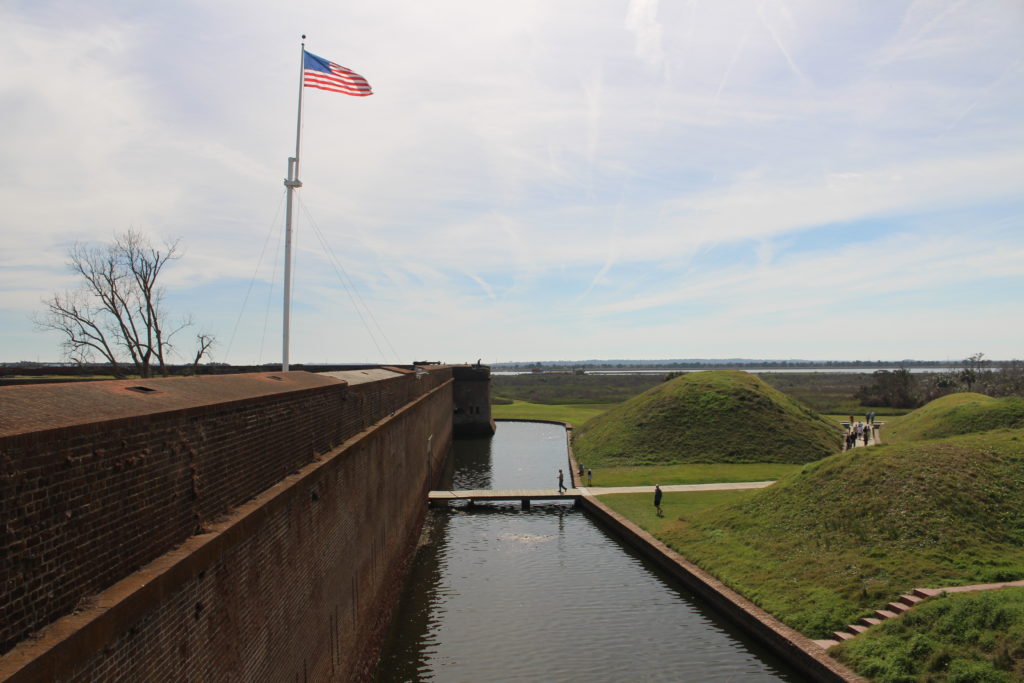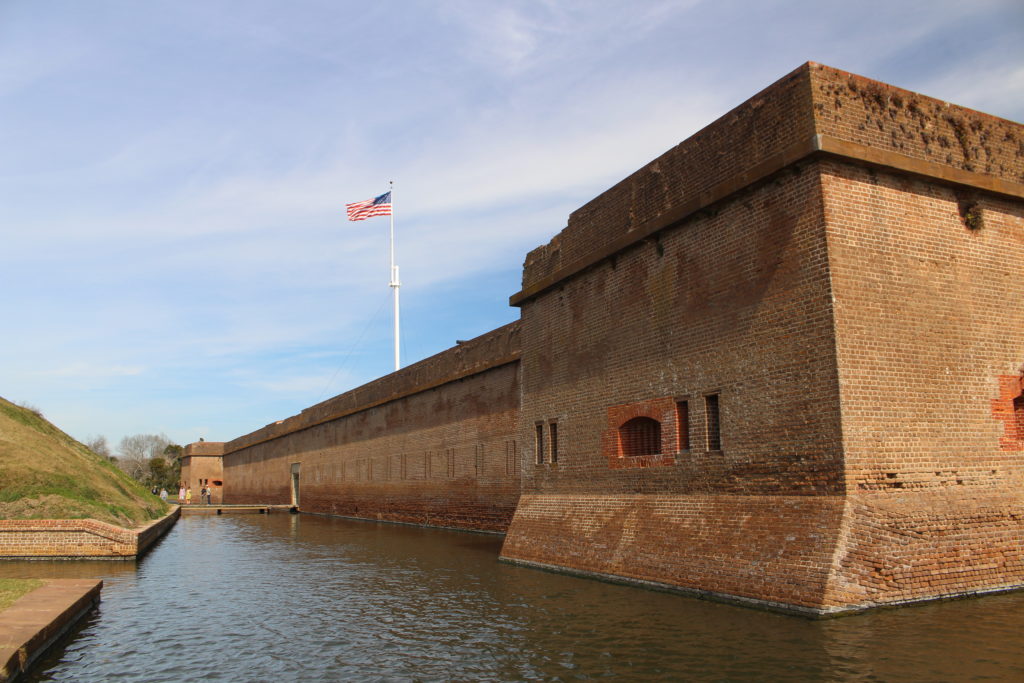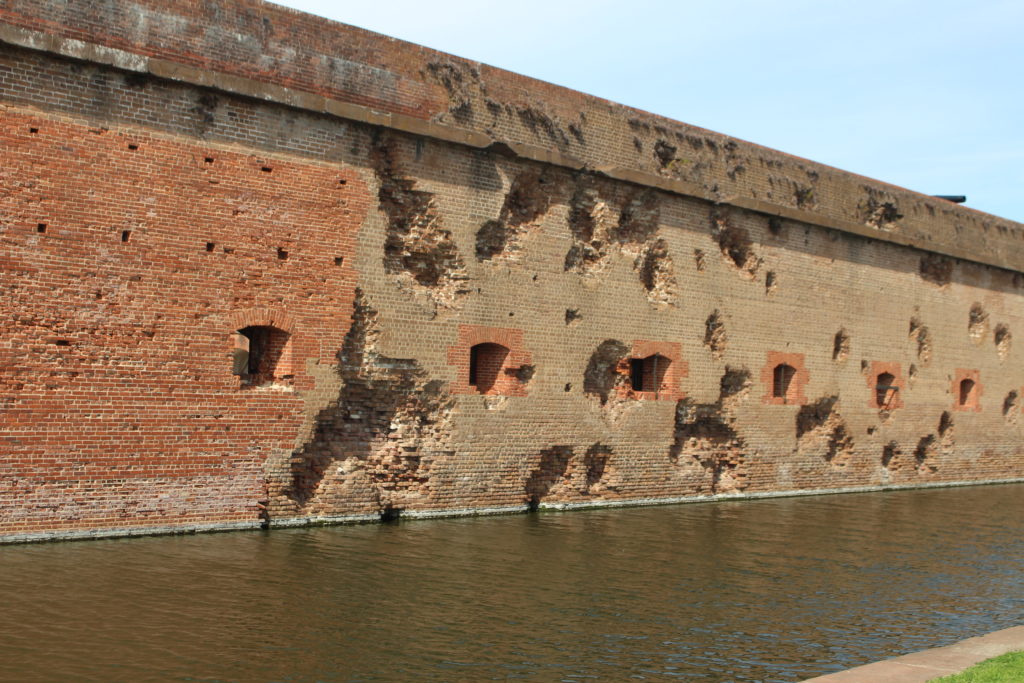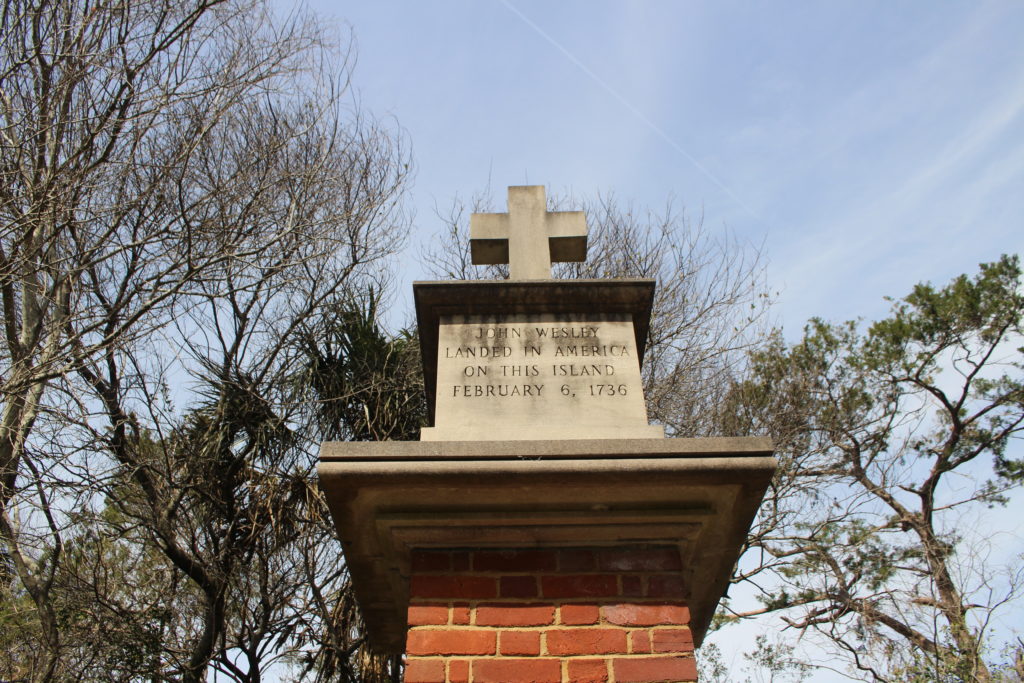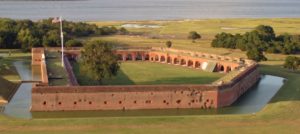
On one of our adventuring days with Mom and Dad, we headed to Fort Pulaski National Monument on Cockspur Island in the Savannah River. Tom and I went to Fort Pulaski years ago, but I still needed the stamp for my Passport book.
Fort Pulaski was built as part of the coastal fortifications of the new United States after the War of 1812. Designed by General Simon Bernard, they started building the fort in 1829. After 18 years, $1 million dollars, and 25 million bricks, it was finally completed in 1848. With its 7 1/2 foot thick, masonry walls, the builders considered Fort Pulaski impregnable.
On January 3, 1861 – two weeks after South Carolina seceded from the Union – the South Carolina militia occupied Fort Pulaski. There wasn’t a battle because the only person at the fort was a caretaker who was quite willing to turn over the keys. When Georgia seceded, South Carolina turned Fort Pulaski over to Confederate forces.
The fort protected the port of Savannah with 20,000 inhabitants and a rich trade in cotton, naval stores, and timber. President Lincoln ordered a Federal blockade of the southern ports, and by the end of the summer, the blockade was strangling the southern economy. In December, 1861, Federal troops occupied abandoned Tybee Island at the mouth of the Savannah River.
Engineer Captain Quincy Gillmore, who took command of the troops on Tybee Island, believed that an artillery bombardment could take Fort Pulaski. The Confederates were not worried: the batteries on Tybee Island were almost a mile away and the brick walls of Fort Pulaski could withstand anything. Even Gen. Robert E. Lee told the commanding officer, Col. Charles Olmstead, “Federal gunners on Tybee Island could make it pretty warm for you here with shells, but they cannot breach your walls at that distance.”

The Confederates, however, did not know that the Union army would be using 10 of the new, experimental rifled canons. On April 10, 1862, after giving the Confederates a chance to surrender, the Federal troops opened fire. Within hours, the brick wall facing Tybee Island looked like Swiss cheese. When a canon shell flew through holes in two brick walls and landed within feet of the powder magazine, Col. Olmstead, decided to surrender. In two days, all the masonry fortifications that formed the coastal defense of the United States became obsolete.
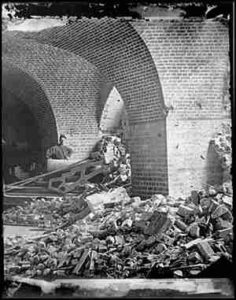
Abandoned after the Civil War, Fort Pulaski became a National Monument in 1924. Today the Fort stands as a memorial to those connected with its construction, bombardment, and defense. It also stands as a lesson on the elusiveness of invincibility.
We enjoyed our visit to Fort Pulaski very much. We went on a tour given by one of the volunteer rangers, and it was the best ranger tour we have ever heard. Our guide talked for over an hour but never let our attention waver. Even though we knew the outcome, we were still breathless with anticipation the whole tour.
I stamped my book in the Visitors Center. Tom used the restroom. We watched a short video on the history of the fort and a presentation on the damage done by Hurricane Matthew. The Fort closed less than a month thanks to National Park Service emergency crews that came from all over the southeast to repair the damage. Only one small part of the fort was still roped off from the hurricane damage.
After our tour, we walked along the outer wall of the fort to examine the shell damage. We could clearly see where newer bricks filled in the holes left by the bombardment. We also took the short hike to the Wesley monument where John Wesley led the colonists in worship after they landed in 1736.
I found out, after I wrote this post, that yesterday was Casimir Pulaski Day, so Happy Casimir Pulaski Day!

